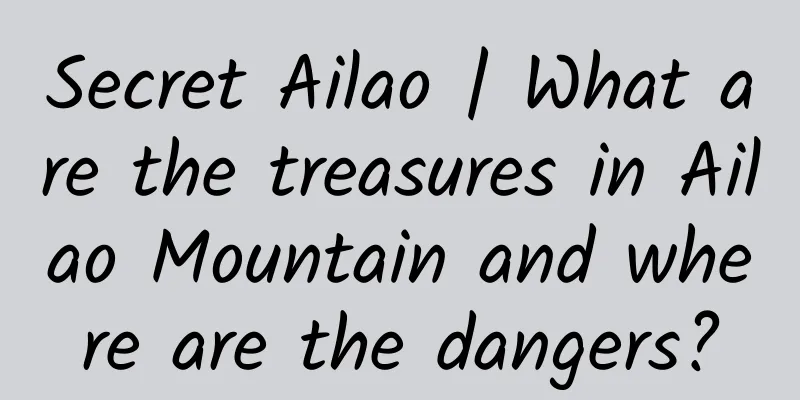The efficacy and function of ylang-ylang

|
There are so many medicinal herbs in the world, and it is inevitable that there are some that we are not familiar with. But as long as we have the spirit of learning throughout our lives, I believe we can slowly learn more medical herbs. Do you know about the medicinal herb Lepidium melongena? [Alias] Vanilla, Little Vanilla [Source] Medicinal material source: the root or whole herb of Valeriana officinalis of the family Valerianaceae. [Original form] Valerian is a perennial, thin, small herb, 10-15(-20)cm tall. The whole plant is hairless. The rhizome is slightly cylindrical, obliquely ascending, with strong fissures, and the top is covered with membranous fibrous old leaf sheaths. Basal petiole up to 5cm long; leaves cordate-broadly ovate or oblong-ovate, 1-4cm long, about 1cm wide, entire or large-pinnate-lobed, terminal lobes round or elliptical, about 1cm long and wide, entire, with two margins; leaves on upper stem pinnate-lobed, 3-7 deeply lobed, lobes linear-lanceolate, entire. The semi-eumorphic cyme is terminal, 1-2 cm in diameter; the bracts are lanceolate with membranous edges; the calyx is fleshy, the flowers are white or sometimes pink; the corolla is slender tubular-funnel-shaped, 5-6 mm long, 5-lobed, and the lobes are obovate; there are 3 stamens, slightly protruding; the stamens and pistils are nearly equal in length, both extending out of the corolla; the ovary is inferior and elliptical. Achenes have feathery pappus at tip. The flowering period is June-July, and the fruiting period is July-August. [Habitat distribution] Ecological environment: Growing in ravines or wet grasslands at an altitude of 1200-3600m. [Properties] Identification of properties: The rhizome is thick and short, with many fine roots, the root diameter is less than 1mm, the surface is brown-yellow, with longitudinal wrinkles and fragments, and the intact ones are 3-5 completely fissured when flattened. The top leaves are larger, slightly concave at the tip, entire, and the side lobes are smaller and sparse; the leaves are thin and brittle. The inflorescence is terminal, and the flowers are white or brownish yellow. Achenes oblong, flat. It has a fragrant aroma and a slightly bitter taste. 【Nature and flavor】 Sweet; slightly spicy; neutral 【Functions and indications】Relieve cough; stop bleeding; disperse blood stasis; relieve pain. Mainly used for cough, hemoptysis, hematemesis, epistaxis, metrorrhagia, rheumatic pain, and fracture [Usage and Dosage] For oral use: decocted in water, 2-5g. 【Excerpt】 Chinese Materia Medica Having said so much, we can see that ylang-ylang has many functions. It can also be used as medicine to treat diseases. You might as well know more about these, it will be helpful in your life. |
<<: The efficacy and function of Lei Mushroom
>>: The efficacy and effects of Monkey Sampoerna
Recommend
Red alert! Typhoon Makar will land here, how should we respond?
As Typhoon Makar is about to land, Hainan raises ...
Is it safe for everyone to take a hot spring bath in the same pool in winter?
Produced by: Science Popularization China Author:...
The efficacy and function of small-leaved Caesalpinia
Small-leafed cloudberry is a traditional Chinese ...
Lips are always chapped, does licking them help? Doctors suggest you do this | Graphic Science
Dry, cracked, and peeling, over and over again. W...
The efficacy and function of autumn grapes
Many people know that autumn grapes have unique t...
The efficacy and function of moss
Many people are not very clear about the effects ...
A scientific Chinese New Year | Spring Festival Gala + Technology! Come and watch the Spring Festival Galas in various places and listen to the "gluttonous feast"
Dragons soar and tigers leap, auspicious stars sh...
Agrimony poisoning
Herba Centifoliae is a traditional Chinese medici...
What are the effects of Aiyecao
I guess many people have seen mugwort, but they d...
After 10 years of research, large-scale breeding is achieved! What is the garlic orchid and is it edible?
After 10 years of research, this national second-...
I heard that sequels dominated the Spring Festival period! Why do movies love to have sequels?
Looking back at the movies during the Spring Fest...
Effects of Prunella Vulgaris
Prunella vulgaris, also known as iron-colored gra...
The efficacy and function of the Chinese herbal medicine white peony root
I believe everyone must have heard of the name of...
Popular Science | Little-known facts about Mandarin: How did the ancients speak “Mandarin”?
People who love costume dramas must have had a dr...









